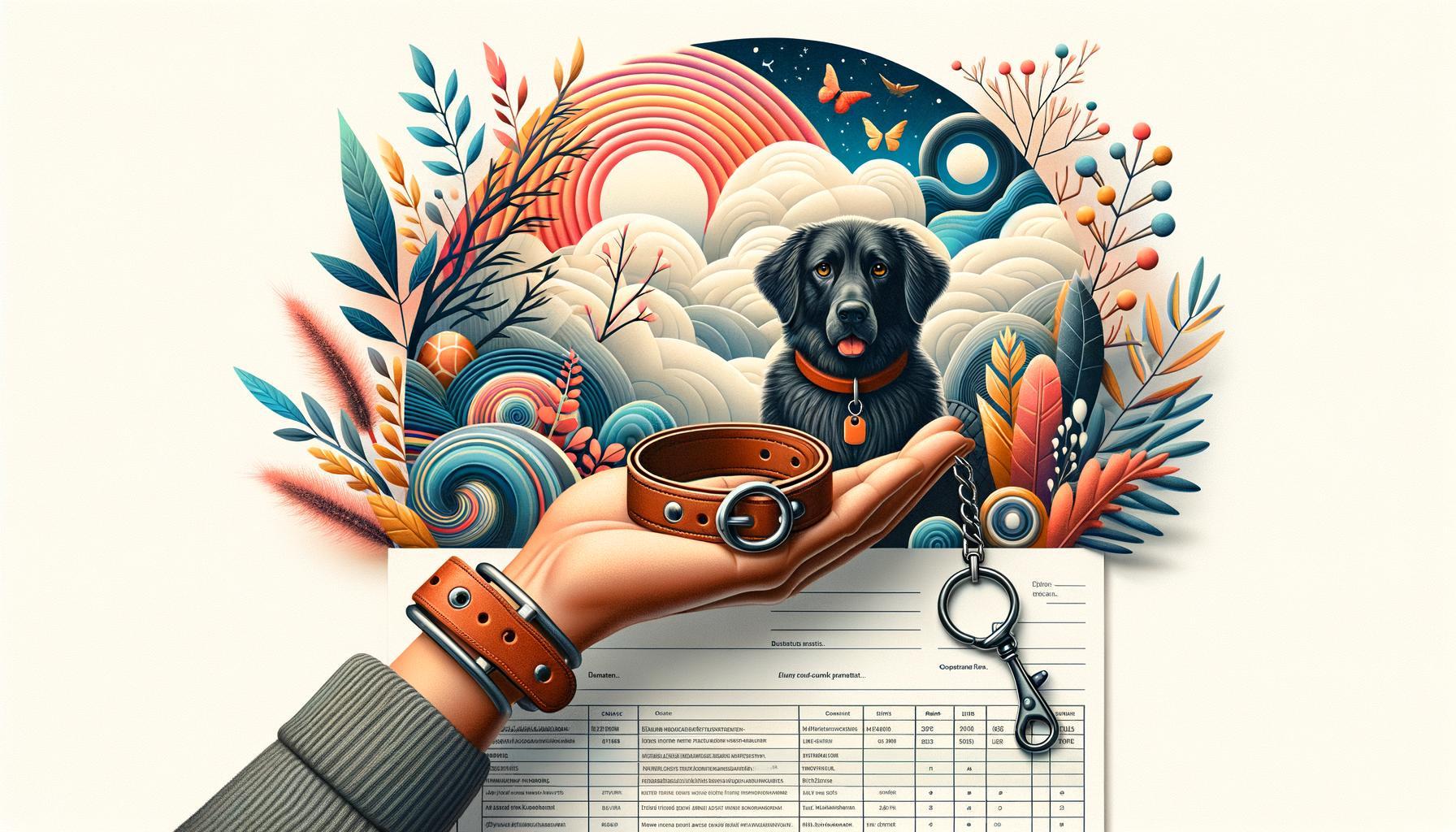In a world often brimming with the chaos of daily demands and the unrelenting pace of modern life, the concept of companionship takes on an almost magical significance. But beyond the familiar faces of friends, family, and colleagues, there lies a unique type of bond, one that delves deeper into the realms of emotional and psychological support. Enter the Emotional Support Animal (ESA): a cherished confidant whose very presence can soothe the soul and lift the heaviest of hearts. This article explores the profound connection between humans and their ESAs, shedding light on the unsung heroes who offer not just companionship, but gentle, unwavering emotional support in times of need. From the wagging tails of dogs to the gentle purring of cats, and even the quiet gaze of a rabbit, join us as we unravel the heartfelt companionship that lies at the core of the human-animal bond.
Table of Contents
- Understanding the Role of Emotional Support Animals
- The Therapeutic Benefits of Furry Friends
- Choosing the Right Companion: Factors to Consider
- Legal Protections and Responsibilities for Owners
- Training and Care Tips for Your Emotional Support Animal
- The Way Forward
Understanding the Role of Emotional Support Animals
Emotional support animals provide not just affection but also a sense of purpose and routine. They help individuals facing mental health challenges by being an unwavering source of comfort and companionship. These animals, typically dogs or cats, facilitate daily interactions and engagements that might otherwise seem daunting. Their presence alone can ease feelings of loneliness, depression, and anxiety. Moreover, the bond formed between a human and their emotional support animal can significantly improve the person’s ability to handle stress and navigate social interactions.
The benefits of having an emotional support animal include:
- Reduction of stress and anxiety levels
- Enhanced social interactions and opportunities
- Improved sense of well-being and stability
| Benefit | Description |
|---|---|
| Reduced Stress | Comfort from physical touch and presence |
| Social Engagement | Facilitates interactions and reduces isolation |
| Stability | Provides a sense of routine and responsibility |
The Therapeutic Benefits of Furry Friends
Emotional support animals (ESAs) bring a plethora of benefits to their human companions, often proving to be invaluable pillars during challenging times. These furry friends have an uncanny ability to sense distress, providing comfort with their mere presence. Their intuitive nature helps reduce feelings of loneliness and isolation, fostering a sense of security and belonging. Furthermore, the unconditional love they offer can boost the production of dopamine and serotonin, enhancing overall mental well-being. Engaging with an ESA frequently can lead to significant improvements in emotional stability and resilience.
Interaction with ESAs engages us in numerous activities that are both soothing and supportive to mental health. Daily routines such as walking, feeding, and playing become joyful rituals that promote a structured and meaningful daily life. Here are some compelling benefits:
- Reduces stress and anxiety: The calming presence of an ESA can ease the symptoms of anxiety and daily stress.
- Encourages physical activity: Regular walks and playtime lead to healthier lifestyle habits.
- Enhances social interaction: Walking a friendly pet can lead to social interactions, reducing feelings of isolation.
- Provides a routine: Caregiving responsibilities help structure the day, providing purpose and stability.
| Benefit | Description |
|---|---|
| Emotional Stability | ESAs help manage emotions and reduce mood swings. |
| Companionship | Provides a sense of belonging and reduces loneliness. |
Choosing the Right Companion: Factors to Consider
When selecting an emotional support animal (ESA), the decision must be guided by a blend of practical considerations and personal preferences. Some key factors to weigh include the **size** of the animal, which can influence the ease of transportation and comfort in your living space, and the **temperament**, ensuring that the animal’s personality aligns with your emotional needs. Animals with a calm disposition may provide a sense of tranquility, whereas more energetic animals might contribute positivity and liveliness to your daily routine.
- Allergies: Consider any potential allergic reactions to fur or dander.
- Lifestyle: Reflect on your daily schedule and lifestyle. Do you travel often? Are you at home most of the day?
- Living Space: Assess your home environment. Is it suitable for larger animals, or would a smaller, more adaptable pet be better?
Beyond these practical aspects, personal preferences also play a substantial role in your choice. Some people naturally bond with certain species over others, so it’s crucial to follow your instinct and consider what type of animal you feel most comfortable with. Here is a quick comparison to help you visualize different ESA options:
| Animal Type | Pros | Cons |
|---|---|---|
| Dog | Loyal, Protective, Active | High Maintenance, Needs Exercise |
| Cat | Independent, Low Maintenance | Less Trainable, Sometimes Distant |
| Bird | Colorful, Social, Unique | Noise, Requires Space for Flight |
Ultimately, the right ESA will bring **comfort**, **joy**, and **stability** to your life, fostering a deeply enriching companionship that caters to your unique emotional needs.
Legal Protections and Responsibilities for Owners
Owning an emotional support animal (ESA) brings both joys and responsibilities. As an owner, you are entitled to certain **legal protections** that ensure your companion can accompany you in various environments. Under the Fair Housing Act (FHA), landlords must provide “reasonable accommodation” for ESAs, even in properties with a no-pets policy. Similarly, the Air Carrier Access Act (ACAA) allows ESAs to fly in the cabin with their owners without incurring additional pet fees. It is crucial to know these rights to advocate for yourself and your companion effectively.
Conversely, ESA owners have a set of **responsibilities** to uphold. Animals must behave appropriately in public spaces to maintain these accommodations. It is the owner’s duty to ensure their ESA does not pose a threat or cause disruptions. Neglecting these responsibilities can result in losing the privilege of keeping the animal in accommodations that otherwise do not permit pets. Below is a quick reference table summarizing key legal protections and responsibilities:
| Aspect | Details |
|---|---|
| Housing | Landlords must allow ESAs even with no-pets policy. |
| Air Travel | ESAs can travel in-cabin without extra fees. |
| Behavior | Ensure ESA is well-behaved in public spaces. |
| Safety | ESA should not pose threats or disruptions. |
Training and Care Tips for Your Emotional Support Animal
Fostering a strong bond with your emotional support animal requires dedication and understanding. Start with **consistent training**, which creates a structured environment and helps instill obedience and trust. Short, regular training sessions are more effective than long, sporadic ones. **Positive reinforcement** techniques work wonders; reward your ESA with treats, affection, and praise when they successfully follow commands. Incorporate tasks that are not just obedience-related but also serve therapeutic purposes, such as deep pressure therapy or grounding exercises.
Ensuring the well-being of your support companion is equally essential. Pay attention to their **nutrition, exercise, and mental stimulation**. A balanced diet tailored to their specific needs keeps them energetic and healthy. Regular exercise is crucial; it not only helps with physical health but also reduces anxiety and destructive behavior. Here are some care tips to follow:
- Provide **adequate physical activity** tailored to the breed.
- Engage in **interactive play** to stimulate their mind.
- Schedule **routine veterinary check-ups** to monitor health.
- Maintain a **comfortable living environment** free from stressors.
| Aspect | Details |
|---|---|
| Training | Short, consistent sessions using positive reinforcement. |
| Nutrition | Balanced, breed-specific diet. |
| Exercise | Regular, breed-appropriate activities. |
| Mental Stimulation | Interactive play and tasks. |
The Way Forward
As we draw the curtains on our exploration of emotional support animals, it’s evident that these unique companions offer more than just a comforting presence—they are lifelines to many, serving as silent yet steadfast anchors in turbulent seas. In a world that often feels fast-paced and overwhelming, the bond between a human and their furry, feathered, or scaled friend stands as a testament to the enduring power of empathy and connection. Whether cradling us through a storm of anxiety or simply being there to brighten the mundane, these remarkable animals weave an emotional tapestry that enriches the human spirit. As we step forward, let us carry with us the understanding and appreciation of this profound companionship, cherishing the role they play in the delicate dance of our daily lives.







Leave a Reply